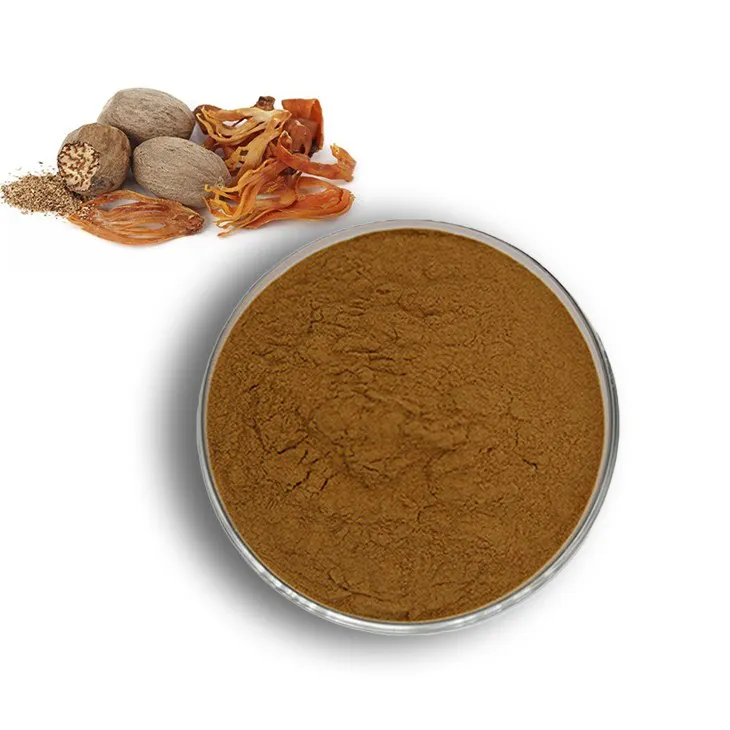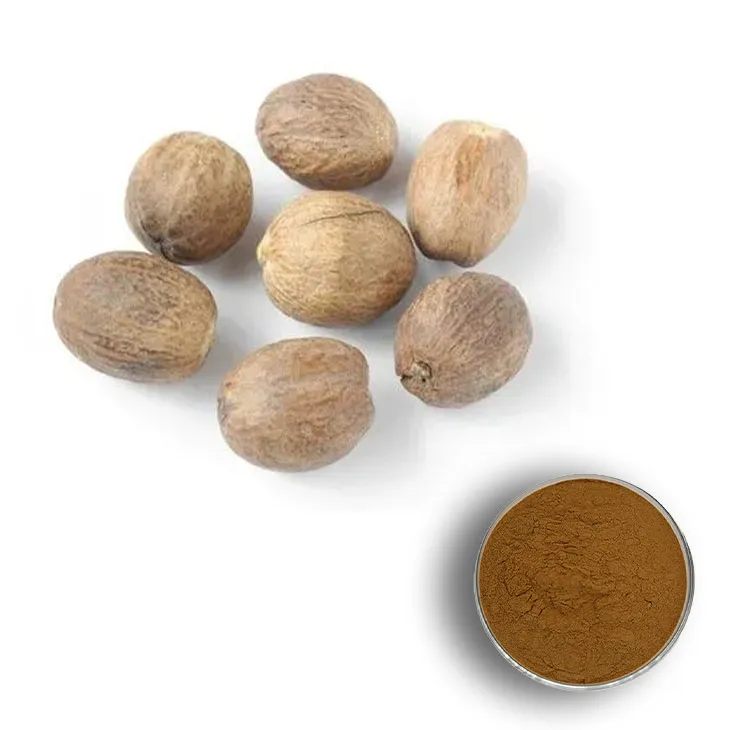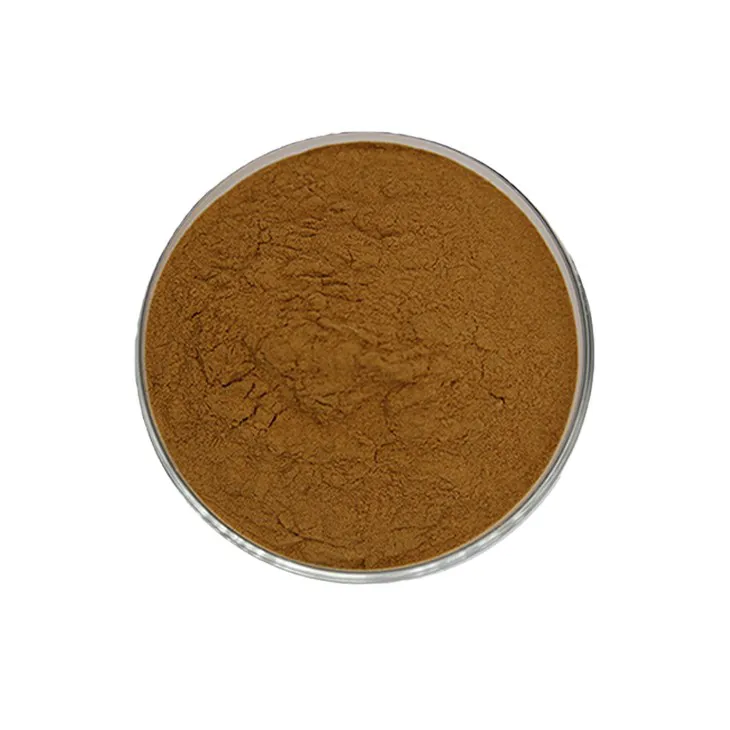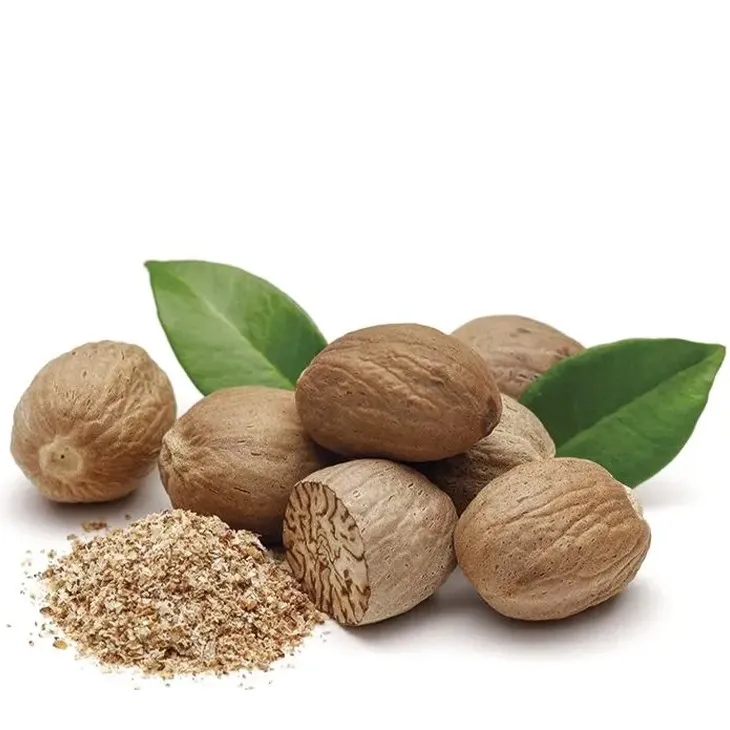- 0086-571-85302990
- sales@greenskybio.com
The process of extracting myristicin from nutmeg extract.
2024-11-29

1. Introduction
Nutmeg, a widely known spice, has been of great interest in the field of natural product isolation due to the presence of various bioactive compounds. Among these, myristicin is a significant compound with potential pharmacological properties. The extraction of myristicin from Nutmeg Extract is a complex yet fascinating process that involves multiple steps and techniques. Nutmeg Extract, which serves as the starting material, is a complex mixture containing a wide array of compounds. This makes the isolation of myristicin a challenging task that requires precise and efficient extraction and separation methods.

2. Initial Extraction from Nutmeg
2.1 Maceration
One of the initial methods for extracting substances from nutmeg is maceration. In this process, nutmeg is soaked in a suitable solvent for an extended period. This allows the soluble compounds, including myristicin, to dissolve into the solvent. The choice of solvent is crucial in this step. Commonly used solvents for maceration include ethanol, methanol, or ethyl acetate. These solvents have the ability to dissolve a wide range of organic compounds present in nutmeg. For example, ethanol is a popular choice due to its relatively low toxicity and high solubility for many plant - derived compounds.The maceration process can be influenced by several factors. The particle size of the nutmeg powder affects the surface area available for extraction. Finer powder generally results in a more efficient extraction as it provides a larger surface area for the solvent to interact with the nutmeg compounds. The ratio of nutmeg to solvent also plays a vital role. A higher solvent - to - nutmeg ratio can lead to more complete extraction, but it may also increase the cost and complexity of the subsequent separation steps.
2.2 Soxhlet Extraction
Another commonly used method for the initial extraction is Soxhlet extraction. This method is more efficient compared to maceration in some cases. In Soxhlet extraction, the nutmeg sample is placed in a thimble inside a Soxhlet apparatus. The solvent is then continuously recycled through the nutmeg sample. The solvent vaporizes in the distillation flask, rises through the condenser, and then drips back onto the nutmeg sample in the thimble. This continuous refluxing process ensures that the solvent is always in contact with the nutmeg at a relatively high concentration of the dissolved compounds.The advantages of Soxhlet extraction include a more complete extraction of the target compounds. However, it also has some drawbacks. It is a relatively time - consuming process, especially when dealing with large amounts of nutmeg. Additionally, the repeated heating and cooling of the solvent may cause some degradation of heat - sensitive compounds in the Nutmeg Extract.

3. Preliminary Separation of the Crude Extract
3.1 Fractional Distillation
After obtaining the crude extract using either maceration or Soxhlet extraction, the next step is often fractional distillation for preliminary separation. Fractional distillation takes advantage of the different boiling points of the compounds present in the crude extract. Compounds with lower boiling points will vaporize first and can be collected separately from those with higher boiling points.In the context of nutmeg extract, different groups of compounds, including myristicin, will have different boiling points. By carefully controlling the temperature and pressure during the distillation process, it is possible to separate the crude extract into several fractions. However, fractional distillation may not be sufficient to completely isolate myristicin due to the presence of other compounds with similar boiling points.
3.2 Solvent - Solvent Extraction
Solvent - solvent extraction is another method for preliminary separation of the crude extract. This method is based on the differential solubility of compounds in different immiscible solvents. For example, if a polar solvent was used for the initial extraction, a non - polar solvent can be used in the solvent - solvent extraction step.In the case of nutmeg extract, the polar compounds may preferentially dissolve in the polar solvent, while myristicin, which has some degree of non - polarity, may transfer more readily to the non - polar solvent. By carefully choosing the appropriate solvents and optimizing the extraction conditions, such as the ratio of the two solvents and the number of extraction steps, a certain degree of separation of myristicin from other compounds can be achieved. However, like fractional distillation, solvent - solvent extraction alone may not provide a highly pure myristicin product.

4. Precise Isolation of Myristicin
4.1 High - Performance Liquid Chromatography (HPLC)
For the precise isolation of myristicin, high - performance liquid chromatography (HPLC) is a very effective technique. HPLC separates compounds based on their differential interactions with a stationary phase and a mobile phase. In HPLC, the nutmeg extract is injected into a column filled with a stationary phase material, such as silica or a bonded - phase material.The mobile phase, which is a solvent or a mixture of solvents, then carries the sample through the column. Myristicin will interact with the stationary phase differently from other compounds in the extract. By adjusting the composition of the mobile phase, the flow rate, and the temperature, the separation of myristicin can be optimized. For example, changing the polarity of the mobile phase can affect the retention time of myristicin on the column.
The detector in HPLC plays a crucial role in identifying and quantifying myristicin. Commonly used detectors include ultraviolet (UV) detectors, which detect compounds based on their absorption of UV light. The choice of detector depends on the properties of myristicin and the other compounds in the extract. For example, if myristicin has a characteristic UV absorption wavelength, a UV detector can be used to monitor its elution from the column.
4.2 Gas Chromatography (GC)
Gas chromatography (GC) is another powerful technique for the isolation of myristicin. In GC, the sample is vaporized and carried through a column by an inert gas, such as helium or nitrogen. The column is filled with a stationary phase, which can be a liquid or a solid. Myristicin, being a volatile compound, is well - suited for analysis by GC.Similar to HPLC, the separation in GC is based on the differential interactions of the compounds with the stationary and mobile phases. The temperature program in GC is an important parameter that affects the separation. By gradually increasing the temperature during the analysis, compounds with different boiling points can be separated effectively.
The detector in GC also plays a crucial role. Flame ionization detectors (FID) are commonly used in GC for the analysis of organic compounds like myristicin. The FID measures the ions produced when the compounds are burned in a hydrogen - air flame. This provides a sensitive and reliable method for detecting and quantifying myristicin in the nutmeg extract.

5. Optimization of the Chromatographic Process
During the chromatographic separation of myristicin, several factors need to be optimized to enhance the extraction efficiency and purity.
- Type of Detector: As mentioned earlier, the choice of detector in both HPLC and GC is crucial. Different detectors have different sensitivities and selectivities for myristicin. For example, in HPLC, a photodiode array detector (PDA) can provide more detailed spectral information compared to a simple UV detector, which can be useful for identifying myristicin in a complex extract. In GC, the choice between a FID and an electron capture detector (ECD) depends on the nature of the sample and the presence of other interfering compounds.
- Flow Rate of the Mobile Phase: In HPLC, the flow rate of the mobile phase affects the retention time and the resolution of the separation. A too - high flow rate may result in poor separation as the compounds may not have enough time to interact with the stationary phase. On the other hand, a too - low flow rate may increase the analysis time. In GC, the flow rate of the carrier gas also affects the separation efficiency. A proper flow rate needs to be determined experimentally for each specific analysis.
- Sample Injection Volume: The injection volume in both HPLC and GC can influence the separation and detection of myristicin. A large injection volume may overload the column, leading to peak broadening and reduced resolution. However, a too - small injection volume may result in insufficient signal for detection. The optimal injection volume needs to be determined based on the concentration of myristicin in the sample and the capacity of the column.
6. Conclusion
The extraction of myristicin from nutmeg extract is a multi - step process that involves initial extraction methods such as maceration or Soxhlet extraction, preliminary separation techniques like fractional distillation or solvent - solvent extraction, and precise isolation using HPLC or GC. Each step has its own advantages and limitations, and the overall success of the extraction depends on careful optimization of various factors. The development of more efficient and selective extraction methods for myristicin from nutmeg extract continues to be an area of active research, as myristicin has potential applications in various fields, including medicine and the food industry.
FAQ:
What are the common methods for the initial extraction from nutmeg?
Common methods for the initial extraction from nutmeg include maceration or Soxhlet extraction. These methods can extract substances from nutmeg into a solvent.
Why are fractional distillation or solvent - solvent extraction considered for preliminary separation?
After obtaining the crude extract from nutmeg, fractional distillation or solvent - solvent extraction can be considered for preliminary separation because the nutmeg extract is rich in multiple compounds, and these methods can help in separating different components to some extent.
What are the advantages of using HPLC or GC for precise isolation of myristicin?
HPLC or GC are more effective for precise isolation of myristicin as these chromatographic techniques can accurately separate myristicin according to its molecular structure and interaction with the stationary phase.
What factors need to be optimized during the chromatographic process for myristicin extraction?
During the chromatographic process for myristicin extraction, factors like the type of detector in chromatography, the flow rate of the mobile phase, and the sample injection volume need to be optimized to enhance the extraction efficiency and purity of myristicin.
Can other methods be used instead of HPLC or GC for myristicin isolation?
While HPLC and GC are more effective for precise isolation, other methods may be used for partial separation. However, for highly accurate and pure isolation of myristicin, HPLC and GC are preferred. Other methods may not be as accurate in separating myristicin according to its molecular structure and interaction with the stationary phase.
Related literature
- Isolation and Characterization of Myristicin from Nutmeg Extract"
- "Advanced Techniques in Myristicin Extraction from Natural Sources"
- "The Chemistry of Nutmeg Extract and Myristicin Isolation"
- ▶ Hesperidin
- ▶ Citrus Bioflavonoids
- ▶ Plant Extract
- ▶ lycopene
- ▶ Diosmin
- ▶ Grape seed extract
- ▶ Sea buckthorn Juice Powder
- ▶ Fruit Juice Powder
- ▶ Hops Extract
- ▶ Artichoke Extract
- ▶ Mushroom extract
- ▶ Astaxanthin
- ▶ Green Tea Extract
- ▶ Curcumin
- ▶ Horse Chestnut Extract
- ▶ Other Product
- ▶ Boswellia Serrata Extract
- ▶ Resveratrol
- ▶ Marigold Extract
- ▶ Grape Leaf Extract
- ▶ New Product
- ▶ Aminolevulinic acid
- ▶ Cranberry Extract
- ▶ Red Yeast Rice
- ▶ Red Wine Extract
-
Echinacea Extract
2024-11-29
-
Ginger Extract
2024-11-29
-
Reishi mushroom extract
2024-11-29
-
Beta Carotene
2024-11-29
-
Pomegranate Extract
2024-11-29
-
Moringa powder
2024-11-29
-
Red Wine Extract
2024-11-29
-
Bamboo Leaf extract
2024-11-29
-
Sea buckthorn oil
2024-11-29
-
Eucommia Ulmoides Extract
2024-11-29





















